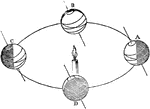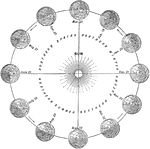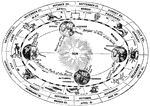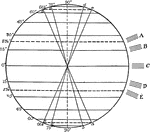Four Seasons
The Four Seasons ClipArt gallery provides 10 illustrations related to the cause and progression of the seasons on Earth.

Earth Axis
"Now it is the inclination of the Earth's axis, as above described, which causes the lengths of the…

Earth Axis
"Now it is the inclination of the Earth's axis, as above described, which causes the lengths of the…
Spring Equinox and Autumn Equinox
"Relative positions of the earth and the sun on March 21 (spring equinox) and September 21 (autumn equinox)…

Seasons
"To illustrate the revolution of the earth around the sun. The shaded portion represents night. The…

Seasons
"Suppose the Earth to be in her Summer solstice, which takes place on the 21st of June. At this period…

Seasons etc.
A diagram that shows constellations, seasons, equinoxes, solstices and astrological signs.

Seasons from Earth's Orbit
"Relative positions of the earth and the sun during the spring equinox, the summer solstice, the autumn…

Seasons in Latitude
A diagram to show seasons in latitude (a-e) in accordance with the suns rays (A-E).

Summer Solstice
"Relative positions of the earth and the sun on June 21, the summer solstice. Summer and long days north…

Winter Solstice
"Relative positions of the earth and the sun on December 21, the winter solstice. Winter and short days…